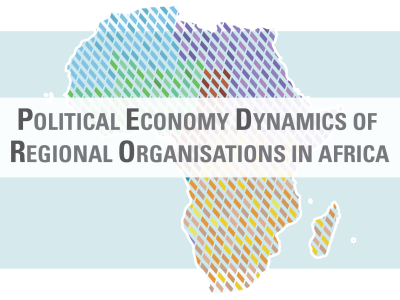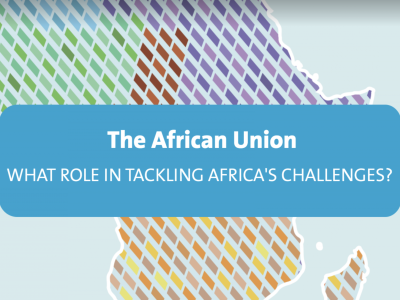
Sustainability principles for public-private partnerships
Because of the diversity of partnerships, it is difficult to identify sustainability criteria that can be universally applied across the range of PPPs, contributing to the challenge of monitoring and enforcement of such criteria. Donor approaches to PPPs should also take account of political realities to allow adaptation to interests and incentives.
There is growing recognition that global challenges are interconnected and complex, therefore requiring multi-stakeholder alliances between all sectors of society. The size of task at hand combined with increasing pressure on public budgets for development cooperation call for using scarce public resources to more effectively leverage private resources that together can help achieve the 2030 Agenda for Sustainable Development. Almost all donors engage with businesses in one form or another as part of their development strategies to trigger inclusive economic growth, decent job creation and better governance, all fundamental factors for sustainable development. The aim to support and engage with the private sector can increasingly also be seen in the institutional setup of public entities (e.g. ministries, development agencies, development finance institutions).
While generating private returns for financial viability is an imperative requirement, a ‘successful’ partnership must generate public returns in terms of wider social, political and environmental benefits for society. The challenge for partnerships is therefore to smartly combine these commercial and development imperatives. This relates also to the question of where to invest and in what kind of activities, as developmental needs are more acute in poor, and often fragile countries, while investment returns and low levels of risk are to be found in more developed and stable markets. Hence it is not surprising that 60% of public-private partnerships’ (PPPs) investments are targeted to upper-middle income countries, and when in lower income countries, these are often in more developed regions.
Beyond where investments take place, the way that investment takes place is also fundamental in shaping development outcomes. A burgeoning array of development principles governing private sector engagement in development reflects a degree of convergence on what is appropriate private sector behaviour. However, many challenges remain in ensuring compliance and enforcement. This means that donors must find a balance between legally binding regulations and softer measures aimed at incentivising enterprises into compliance. While it might be easier to get private firms to sign up to voluntary principles, they may be less effective than mandatory principles.
Three PPPs - agriculture, healthcare and textile
In a recent study for the Belgian NGO 11.11.11, ECDPM and KU Leuven took a closer look at some of the main sets of criteria or principles applied to make private sector engagement more ‘developmental’ and sustainable. To do so, the study also looked at three prominent examples of PPPs to identify lessons learnt across diverse sectors and actors: i) a private sector driver in the agriculture sector for SAGCOT, ii) public health sector in the Lesotho case, and iii) a civil society-led cooperation on textiles in the case of the Better Factories Cambodia programme. The purposes and objectives for each of the cases therefore also differ, from leveraging private investments, to provision of health care as a public good, to addressing and influencing manufacturing practices.
SAGCOT - Southern Agricultural Growth Corridor of Tanzania
The SAGCOT investment blueprint’s massive scale, in terms of finance and geographical area, reveals important lessons for other PPP frameworks and similar future partnerships. The World Economic Forum’s (WEF) flagship project is a mainly business-driven partnership, which determines and influences the power dynamics among the different stakeholders in the PPP. By taking a holistic and regional approach, SAGCOT tries to address various gaps and issues, such as engaging local farmers, raising overall agricultural productivity, thus contributing to broader economic transformation and decreasing (rural) poverty, increasing job creation, and improving regional coordination towards food security and market development.
To do so, objectives and principles have been put in place to achieve both fair and inclusive Agricultural Green Growth. However, this raises the question of whether the policy, as laid out in the Greenprint strategy for instance, has sufficiently been put into practice. There are concerns about the environmental and social objectives, which are at least controversial or seemingly at risk. This calls for closer monitoring, independent assessments and review structures.
While emphasising the importance of partnership itself, the sustainable development principles fail to take into account the issue of financial sustainability and demand for such investments, which is a prerequisite for successfully achieving the SAGCOT objectives, as realised investments have remained below expectations. Conflicting interests between national and local elites as well as the overall business environment constraints are potentially negative factors for PPPs to develop. Land conflicts, land management and land use in the past do have direct impact on the SAGCOT PPP rather than foreign direct investment (FDI), as it can lead to tensions between involved stakeholders.
Healthcare in Lesotho
A PPP solution to replace Lesotho’s main hospital, the ‘Queen Mamohato’ offered a comprehensive solution that made capital expenditures affordable in the short-term. While the predictability of expenditures would contribute to government budget stability, there were several other promising benefits: the cost neutrality for the patients; the transfer of risk to the private sector for construction delays or cost overruns during construction; the transfer of significant operational risk for a complex healthcare operation; the opportunities it offered for Basotho-owned businesses and local economic empowerment.
However, it has also faced a number of challenges, including escalating costs and payment delays; significant cultural change for nurses, physicians, and staff with regard to the implementation of a strict time and attendance system; negative media reaction during the start-up; challenges for physician recruitment due to comparatively low salaries; and delays in establishing PPP units in the government and strengthening the government’s contract management capabilities. Whereas some of these are relatively manageable challenges, the PPP’s affordability throughout the entire term of the contract is a more pressing and fundamental challenge, with increasing costs beyond what was considered as feasible for the government of Lesotho and no clear solution on the way.
In hindsight, the case also demonstrates that the actual implementation of any provisions remains uncertain and depends strongly on the capacity of the public partner involved to enforce them as well as to stand its ground during unavoidable renegotiations of the contract. The power dynamics between the public and the private partners, but also within a private consortium seem to be an underestimated factor in the outcome of any PPP.
Better Factories Cambodia
The Better Factories Cambodia programme (BFC) represents a third type of PPP, and one which is much less known and studied than its counterpart PPPs in infrastructure and service delivery, focussing on labour standards governance. It is a large-scale multi-donor programme managed by the International Labour Organization (ILO) with the aim to monitor garment and footwear factories, organise training for the management and workers, and provide guidance and advice on factory improvements. The programme has both a promotional function (export promotion) and a monitoring function (labour conditions).
The BFC is largely judged a success because the different actors in the PPP have sufficient incentives to participate and take the system seriously with factories increasingly wary of reputation risks. The factories in the BFC programme also receive human resources management support and are audited in areas that also affect product quality. From the perspective of the Cambodian government, there are strong indications that the factories that comply with the BFC monitoring protocols are more competitive, especially in an international market which has become more sensitive to images of sweatshops, child labour, etc. Research strongly suggests that improvements in working conditions in the BFC factories have gone hand in hand with productivity improvements.
However, as in many developing countries, more than a lack of labour laws and policies it is the enforcement of laws that is problematic. The main criticisms of the BFC scheme have therefore been around declining real wages, outside the control of the programme; opacity around monitoring due to a lack of transparency in the system; enforcement problems when factories do not comply and subcontracting to factories, which are not part of the BFC scheme but produce for and deliver to BFC monitored factories.
Key insights
These cases illustrate some major insights. First, balance of power and capacity tend to condition development outcomes of partnerships.The Lesotho healthcare’s key factor determining the course of the PPP is the capacity of the public partner to adequately negotiate, renegotiate, manage and monitor the deal throughout its entire contract term. Similar conclusions emerge from the controversies over land-titling and the power balance among different actors in the SAGCOT, where large agribusinesses may outplay smallholder farmers. In the case of Better Factories Cambodia, developmental effects on the most important industrial sector of Cambodia (garment sector) in terms of improved working conditions could be identified. But a question remains: whether the enforcement cost is not largely pushed onto the suppliers, with buyers remaining reluctant to take the full cost of a garment that is produced under fair conditions. The BFC process is also designed in such a way that it guarantees international brands secrecy about the interactions with their suppliers. The analysis reflects a wide and widening definition of PPPs, and there are major difficulties in finding data on these. Hence, two basic questions need to be addressed when evaluating a PPP: 1) is the PPP the best tool to address the identified needs in a specific context, in comparison to the alternative options?; and 2) does the PPP deliver what it promised to deliver? To answer these, a better understanding of the PPPs’ costs and benefits is required. This calls for greater transparency, while the underlying PPPs’ design must take into account the likely power imbalances of private sector actors negotiating with public ones in institutionally weak environments. The two concerns raised most frequently regarding development PPPs are additionality and transparency. The first concern is about defining, ensuring and measuring the additional impact that is being achieved due to the public finance component. The latter relates to the availability of reliable information on the negotiation, the design, the implementation and the results of PPPs. The different cases illustrate that the diversity of types of partnerships make it very difficult to come up with useful criteria that can commonly be applied across various PPPs, while monitoring and enforcement of such criteria remain key challenges. It also seems that there are unforeseeable developments and factors, such as the conflict of interests, that may affect the development outcome but are beyond the reach and impact of sustainability criteria. Hence, donors can take a carrot and stick approach to supporting such PPPs but must also take account of political realities to allow adaptation to interests and incentives. This article highlights some of the insights of the study: Byiers, B., Große-Puppendahl, S., Huyse, H., Rosengren, A. and S. Vaes. 2016. Principles for public-private partnerships - towards sustainability? Lessons from SAGCOT, healthcare in Lesotho, and Better Factories Cambodia. (Discussion Paper 194). Maastricht: ECDPM and KU Leuven. http://ecdpm.org/dp194. About the author Sebastian Grosse-Puppendahl is a Policy Officer for the Economic Transformation and Trade Programme at ECDPM.
This article was published in GREAT Insights Volume 5, Issue 5 (October/November 2016).


